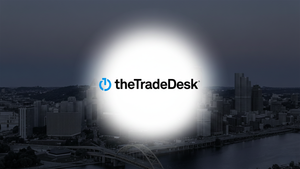
The Federal Reserve's recent hawkish commentary and increasingly clear signals of delayed interest rate cuts are sending ripples of apprehension across global commodity markets. This cautious stance, driven by persistent inflation and a resilient U.S. economy, has triggered a widespread decline in commodity prices and fueled significant investor uncertainty. As of November 14, 2025, markets are grappling with the prospect of "higher for longer" interest rates, recalibrating expectations for everything from precious metals to industrial raw materials and energy.
This shift in monetary policy outlook has immediate and tangible implications. The U.S. dollar has strengthened, making dollar-denominated commodities more expensive for international buyers, thereby dampening demand. Simultaneously, higher interest rates increase the cost of borrowing and the opportunity cost of holding non-yielding assets like commodities, diverting investment capital towards more attractive, yield-bearing alternatives. This combination of factors has created a challenging environment for commodity producers and a complex landscape for investors attempting to navigate the volatile currents of global finance.
The Fed's Tightening Grip: A Detailed Look at Policy and Market Reactions
The Federal Reserve's journey from aggressive rate hikes to a nuanced and now seemingly more hawkish approach to rate cuts has been a defining feature of recent financial markets. Following a period of substantial tightening from March 2022 to July 2023, which saw the federal funds rate climb to 5.25%-5.5%, the Fed initiated an easing cycle in September 2024, delivering 100 basis points (bps) in cuts by December 2024. These initial cuts were a response to moderating inflation and a cooling labor market, bringing the federal funds rate to 4.25%-4.50%.
However, the dovish pivot proved to be short-lived. By December 2024, the Fed's "dot plot"—a graphical representation of FOMC members' projections for future interest rates—signaled a significantly more hawkish outlook for 2025, projecting only 50 bps of rate cuts, half of what was initially anticipated. After a nine-month pause in early 2025, the Federal Open Market Committee (FOMC) resumed cuts on September 16-17, 2025, lowering the rate by 25 bps to 4.00%-4.25%. Chairman Jerome Powell characterized this as a "risk management cut" aimed at addressing a softening U.S. labor market, even as inflation remained stubbornly above target. At that time, two more cuts were signaled for the remainder of 2025.
Fast forward to the current date of November 14, 2025, and the narrative has shifted once more. Recent hawkish statements from various Federal Reserve officials, including St. Louis Fed President Alberto Musalem and Cleveland Fed President Beth Hammack, have significantly dampened expectations for a December 2025 rate cut. Their emphasis on persistent inflation and the economy's unexpected resilience has pushed the probability of a year-end cut below 50%. This renewed hawkishness immediately impacted markets, causing gold and silver prices to plummet, with December gold futures falling $75.50 to $4,119.00 and December silver prices down $1.53 to $51.63 on the day. U.S. stock indexes also tumbled, while the Dollar Index strengthened, reflecting the market's swift repricing of future interest rate expectations. Key players in this ongoing saga include the Federal Reserve's leadership, particularly Chairman Jerome H. Powell, and the diverse views within the FOMC, which often create policy uncertainty. Other central banks, OPEC+, major industrial consumers like China, and institutional investors also play critical roles in shaping commodity market responses.
Navigating the Volatility: Winners and Losers in the Commodity Landscape
The Federal Reserve's sustained hawkish stance and the prospect of prolonged higher interest rates create a distinct divide between potential winners and losers within the global commodity markets and related industries.
Potential Losers:
- Commodity Producers (Mining, Oil & Gas): Companies heavily reliant on commodity extraction, such as major mining corporations like BHP Group (ASX: BHP) or Rio Tinto (ASX: RIO), and oil and gas giants like ExxonMobil (NYSE: XOM) or Chevron (NYSE: CVX), are likely to face significant headwinds. Falling commodity prices directly impact their revenues and profit margins. Higher borrowing costs also make capital-intensive expansion projects more expensive, potentially curbing future supply and growth.
- Highly Leveraged Companies: Businesses across various sectors that carry substantial debt loads will find their debt servicing costs increase as interest rates remain elevated. This can squeeze profitability and limit their ability to invest or return capital to shareholders.
- Emerging Market Economies and Companies: Many emerging markets are heavily dependent on commodity exports. A stronger U.S. dollar makes their dollar-denominated debt more expensive to service and reduces the purchasing power of their commodity revenues. This can lead to economic instability and put pressure on their local currencies.
Potential Winners:
- Commodity Consumers/Input Buyers: Industries that use raw materials as primary inputs may benefit from falling commodity prices. For instance, manufacturers that rely on base metals, airlines that consume large quantities of jet fuel, or food processors using agricultural commodities could see their input costs decrease, potentially boosting their profit margins. Examples might include large-scale manufacturing firms or certain consumer goods companies, although the benefit might be offset by broader economic slowdowns.
- Companies with Strong Balance Sheets and Low Debt: Businesses with robust financial health, ample cash reserves, and minimal debt are better positioned to weather periods of high interest rates. They face lower financing risks and may even be able to acquire distressed assets or invest strategically during market downturns.
- Financial Institutions (selectively): While overall economic slowdown can impact lending, banks that benefit from wider net interest margins in a higher rate environment, and those with diversified revenue streams, might find some resilience.
- U.S. Dollar-Denominated Asset Holders: Investors holding assets denominated in a strengthening U.S. dollar, such as U.S. Treasury bonds, may see increased returns relative to other currencies, attracting capital flows.
The impact on individual companies will depend on their specific exposure to commodity price fluctuations, their debt levels, and their operational efficiency in a higher-cost environment.
Wider Significance: A Global Economic Rebalancing Act
The Federal Reserve's hawkish posture and the resultant commodity market shifts extend far beyond immediate price movements, signaling a broader rebalancing act within the global economy. This event fits into a larger trend of central banks worldwide grappling with persistent inflationary pressures, often stemming from supply chain disruptions, geopolitical tensions, and robust labor markets. The Fed's actions, as the world's most influential central bank, inevitably set a precedent and influence the monetary policy decisions of other nations, potentially leading to synchronized tightening or currency devaluations in response.
The ripple effects are pervasive. In the manufacturing and construction sectors, particularly in major industrial consumers like China (which accounts for over 50% of base metal demand), a slowdown in growth due to higher global interest rates and commodity price volatility could exacerbate existing challenges. China's own structural decline in its construction sector, for instance, could amplify the downward pressure on industrial metals, regardless of Fed policy. For consumers, while falling commodity prices could eventually translate into lower costs for certain goods (e.g., fuel at the pump, food prices), the overall impact might be muted by other inflationary factors and the general economic slowdown induced by higher rates.
From a regulatory and policy standpoint, governments face increased pressure to implement fiscal policies that complement monetary tightening without stifling economic growth. There's also potential for increased scrutiny on commodity market speculation, especially if price volatility is perceived to be driven by factors beyond fundamental supply and demand. Historically, periods of aggressive monetary tightening by the Fed, such as the early 1980s or the more recent hikes from 2022-2023, have consistently led to significant corrections in commodity markets and, at times, broader economic slowdowns or recessions. The current scenario echoes these historical precedents, emphasizing the delicate balance central banks must maintain between taming inflation and preserving economic stability.
What Comes Next: Navigating the Uncertain Path Ahead
The path forward for global commodity markets, under the shadow of the Federal Reserve's hawkish stance, is fraught with uncertainty but also presents distinct possibilities for adaptation and strategic pivots.
In the short-term, continued volatility is almost a certainty. Markets will remain highly sensitive to every Federal Reserve statement, every piece of inflation data (CPI, PCE), and every employment report. Further delays in rate cuts, or even hints of potential rate hikes if inflation re-accelerates, could trigger additional sell-offs in commodities and equities. The U.S. dollar is likely to maintain its strength, keeping pressure on dollar-denominated assets. Geopolitical developments, particularly those affecting energy supplies or trade routes, will also continue to exert significant influence, potentially creating localized price spikes even amid a broader downtrend.
For the long-term, the trajectory will largely depend on the Fed's success in bringing inflation sustainably down to its 2% target without triggering a severe recession. If inflation cools sufficiently and the labor market shows more significant signs of weakening, the Fed may eventually resume its easing cycle, which could provide a tailwind for commodity prices. However, the "higher for longer" paradigm suggests that any return to extremely low interest rates is not imminent. This necessitates strategic pivots for businesses: commodity producers may need to focus on cost efficiency, debt reduction, and diversification, while consumers of commodities might explore long-term hedging strategies or alternative input sources.
Market opportunities may emerge in sectors less sensitive to interest rates, or in companies that stand to benefit from disinflationary trends. Furthermore, specific commodities with strong underlying demand fundamentals (e.g., those critical for the green energy transition) might show resilience or even growth, despite the broader headwinds. Challenges will persist for highly leveraged companies, commodity-dependent economies, and businesses with thin margins. Investors should prepare for a period where active management, careful risk assessment, and a deep understanding of macroeconomic forces will be paramount. Potential scenarios range from a "soft landing" where inflation subsides without a deep recession, allowing for gradual rate cuts, to a more challenging "hard landing" involving a significant economic downturn, which would further depress commodity demand and prices.
Comprehensive Wrap-Up: A New Era of Monetary Prudence
The Federal Reserve's unwavering hawkish stance and the subsequent hints of delayed interest rate cuts mark a pivotal moment for global commodity markets. The immediate impact—widespread price drops, a strengthening U.S. dollar, and heightened investor uncertainty—underscores the profound influence of monetary policy on the real economy. Key takeaways include the Fed's commitment to fighting persistent inflation, even at the cost of prolonged higher interest rates, and the resulting re-evaluation of risk and return across asset classes.
Moving forward, the market will remain in a state of cautious vigilance. The era of readily available cheap capital that fueled previous commodity booms appears to be on hold, ushering in a period where monetary prudence takes precedence. This shift necessitates a fundamental reassessment for businesses, investors, and policymakers alike. Companies must prioritize financial resilience and operational efficiency, while investors should recalibrate their portfolios to account for a sustained higher interest rate environment and increased commodity market volatility.
The lasting impact of this period could be a more disciplined approach to capital allocation, a greater emphasis on fundamental value over speculative growth, and a re-evaluation of global supply chains to mitigate inflationary pressures. What investors should watch for in the coming months are the Federal Reserve's official statements and minutes, inflation reports (particularly the Consumer Price Index and Personal Consumption Expenditures index), employment figures, and global growth indicators, especially from major commodity consumers like China. Geopolitical developments, which can swiftly alter supply-demand dynamics, will also require close monitoring. The current landscape demands adaptability, foresight, and a keen understanding of the intricate dance between monetary policy and global market forces.
This content is intended for informational purposes only and is not financial advice





